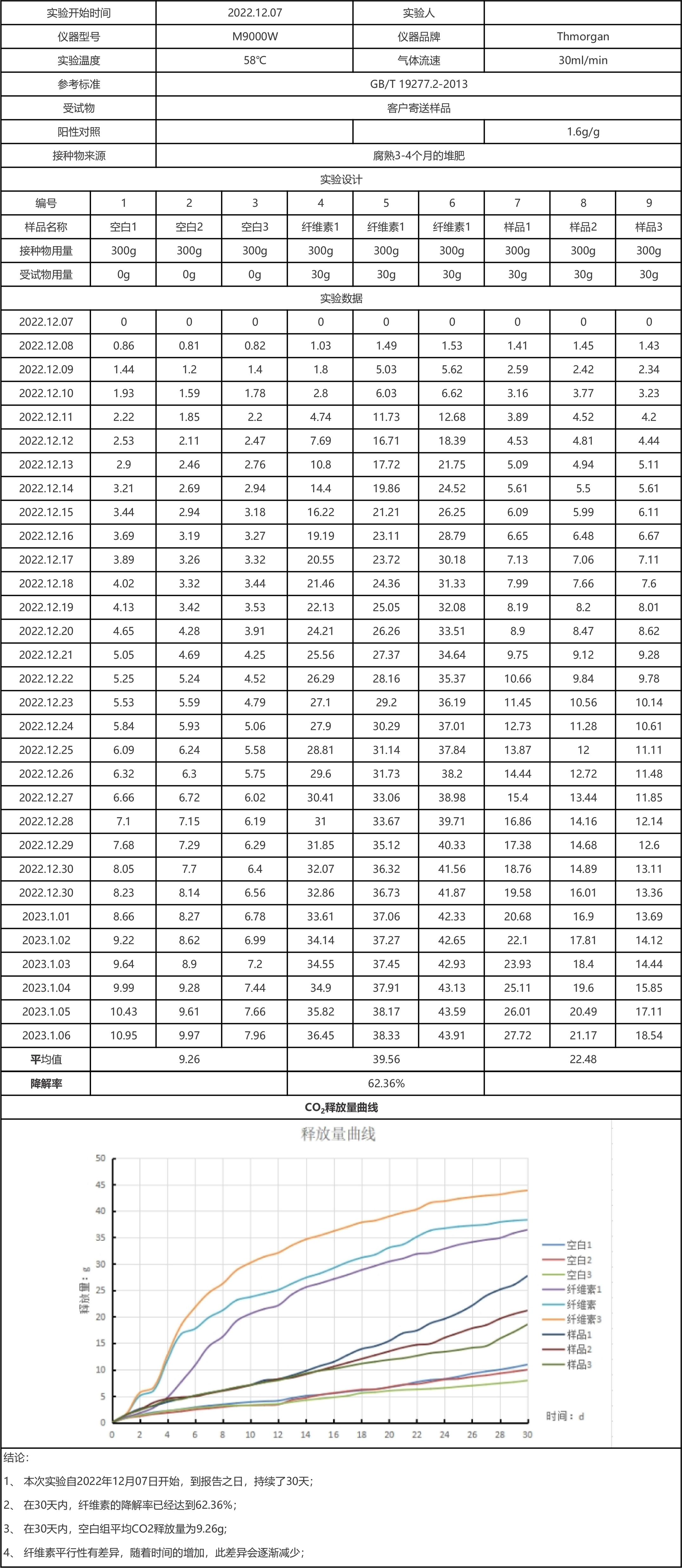Product
All categories

Compost weighing method
Compost weighing test services (Reference standard GB/T 19277.2-2013 Determination of the final aerobic biodecomposition capacity of materials under controlled compost conditions using the method of determining the release of carbon dioxide - Part 2: Determination of the release of carbon dioxide under laboratory conditions by gravimetric analysis) :
One Experimental purpose
1. Meet the test requirements of GB/T19277.2 standard;
2. Can be used for composting biodegradability detection;
3. Weighing method to detect carbon dioxide production;
4. Suitable for biodegradability determination of bio-based, plastic and other products;
Second, experimental principle
This experiment system simulates the process of biodegradation of bio-based materials under aerobic composting conditions. Under aerobic environment, microorganisms consume oxygen and produce inorganic substances such as carbon dioxide and water by using bio-based materials as carbon sources. The generated carbon dioxide is absorbed by alkaline absorption column, and the increased weight is the carbon dioxide released by biodegradation of the sample. The biodegradation rate is the percentage of the carbon dioxide released by the sample biodegradation and its theoretical carbon dioxide release.
Third, experimental materials
1. Distilled water
2, decomposed compost (3-4 months of fertilizer age, provided by Tomorgan Biology)
3, thin layer chromatography grade (TLC) cellulose
4. Sodium lime
5, color-changing silicone
6. Urea
7, anhydrous calcium chloride
Four experimental steps
1. Instrument preparation
1) Place the decarbonization bottle, reaction bottle, condensation bottle, dehumidification bottle and absorption bottle in the corresponding position, and connect the hose.
2) Open the instrument power supply, open the ventilation system, temperature control system; Check whether the air tightness of the reaction system is normal; Check that the temperature is maintained at a constant temperature.
3) Open the power supply of the electronic balance, check whether the balance can be used normally, and calibrate the balance.
2. Preparation of inoculants
1) Weigh Morgan's homemade compost, add water to activate it for 24 hours, set aside.
3. Add experimental materials
1) Add sodium lime to decarbonized bottle.
2) Add the color-changing silicone to the dehumidifier bottle.
3) Add sodium lime and anhydrous calcium chloride to the reaction bottle.
4. Sample preparation
1) The bulk experimental material is processed into a uniform shape with a surface area of no more than 2cm*2cm, and 3 parts are weighed, each of which is 30g.
2) Weigh 3 portions of fiber, 30g each.
5. Sample addition
1) Weigh 300g of activated compost, add the cellulose and the tested matter to the compost, mix them, and put them into the reaction bottle.
2) Connect the reaction system and check the tightness of the reaction system again.
6, adjust the instrument parameters
1) Adjust the flow rate of each channel to 30ml/min.
2) Clear the accumulated data of each channel and start the experimental cumulative data.
7. Regular maintenance and observation of data
1) After the start of the experiment, observe whether the experimental equipment is abnormal and whether the experimental data growth meets the expectation every day.
Five M9000W degradation experiment record report





